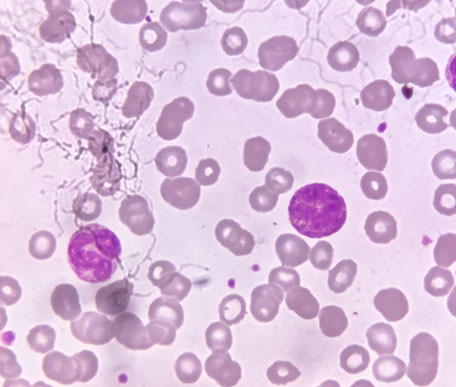


Pancytopenia is a medical condition characterized by a deficiency of all three types of blood cells: red blood cells (erythrocytes), white blood cells (leukocytes), and platelets (thrombocytes). This condition can result from various underlying causes, such as bone marrow disorders, autoimmune diseases, infections, certain medications, or exposure to toxins.
Symptoms of pancytopenia may include:
1. Fatigue and weakness due to low red blood cell count (anemia).
2. Increased susceptibility to infections due to low white blood cell count (leukopenia).
3. Easy bruising or bleeding tendencies due to low platelet count (thrombocytopenia).
4. Pale skin.
5. Shortness of breath.
6. Rapid heart rate.
7. Frequent infections.
Treatment for pancytopenia depends on the underlying cause. It typically involves addressing the specific condition or factor contributing to the decrease in blood cell production.
Treatment options may include:
1. Medications: If an underlying infection or autoimmune disorder is causing pancytopenia, medications may be prescribed to treat the condition and improve blood cell production.
2. Blood transfusions: In severe cases, blood transfusions may be necessary to replenish deficient blood cells and improve symptoms. This can include red blood cell transfusions for anemia, platelet transfusions for thrombocytopenia, and white blood cell transfusions for leukopenia.
3. Bone marrow stimulation: Certain medications or growth factors may be used to stimulate the production of blood cells in the bone marrow.
4. Bone marrow transplant: In cases of severe pancytopenia caused by bone marrow disorders or failure, a bone marrow transplant may be considered to replace damaged or dysfunctional marrow with healthy donor marrow.
5. Supportive care: Patients with pancytopenia may require supportive care measures, such as antibiotics to prevent or treat infections, and measures to control bleeding or bruising.
It's important for individuals experiencing symptoms of pancytopenia to seek medical attention promptly for proper diagnosis and treatment. Early intervention can help manage the condition effectively and improve quality of life.